Abstract
Both diacetyl and acetoin were produced by cell-free extracts and cultures of Pseudomonas fluorescens, Aerobacter aerogenes, Lactobacillus brevis, and Saccharomyces cerevisiae 299, whereas only acetoin was produced by cell-free extracts and cultures of Streptococcus lactis, Serratia marcescens, Escherichia coli, and S. cerevisiae strains 513 and 522. Cell-free extracts that produced diacetyl did not produce it from acetoin; they produced it from pyruvate, but only if acetyl-coenzyme A was was added to the reaction mixtures. Production of diacetyl by S. cerevisiae 299 was prevented by valine, inhibited by sodium arsenite, and stimulated by pantothenic acid. Valine did not prevent the production of acetoin. E. coli and the three strains of S. cerevisiae did not decarboxylate α-acetolactate but did use acetaldehyde in the production of acetoin from pyruvate. The other organisms produced acetoin from pyruvate via α-acetolactate.
Full text
PDF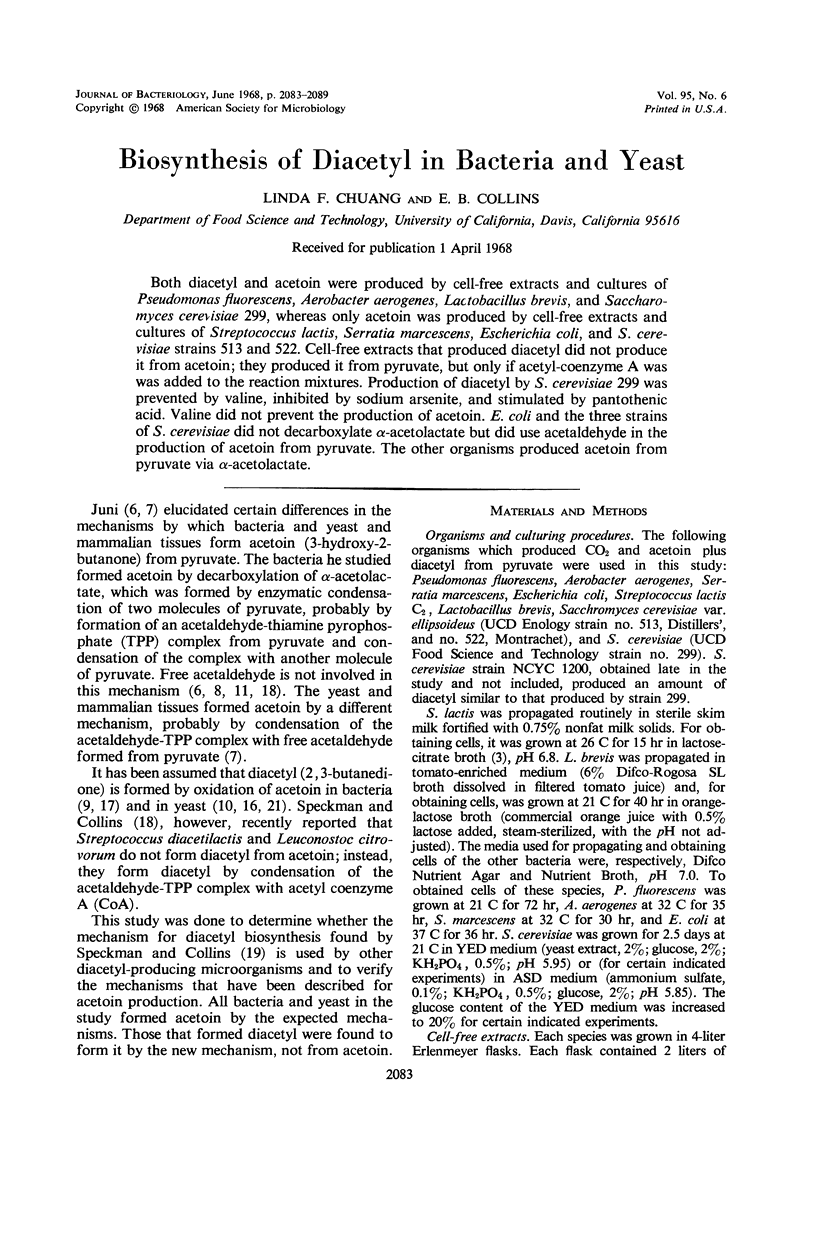
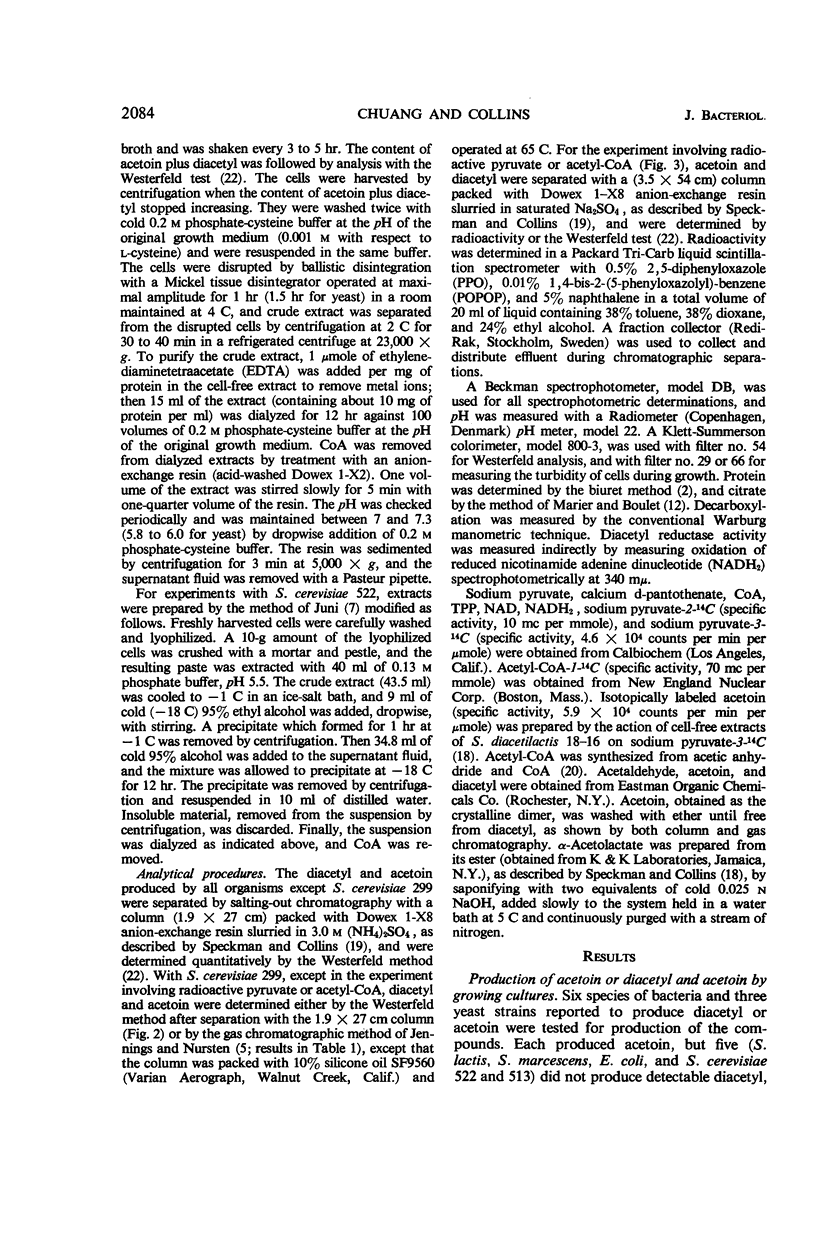
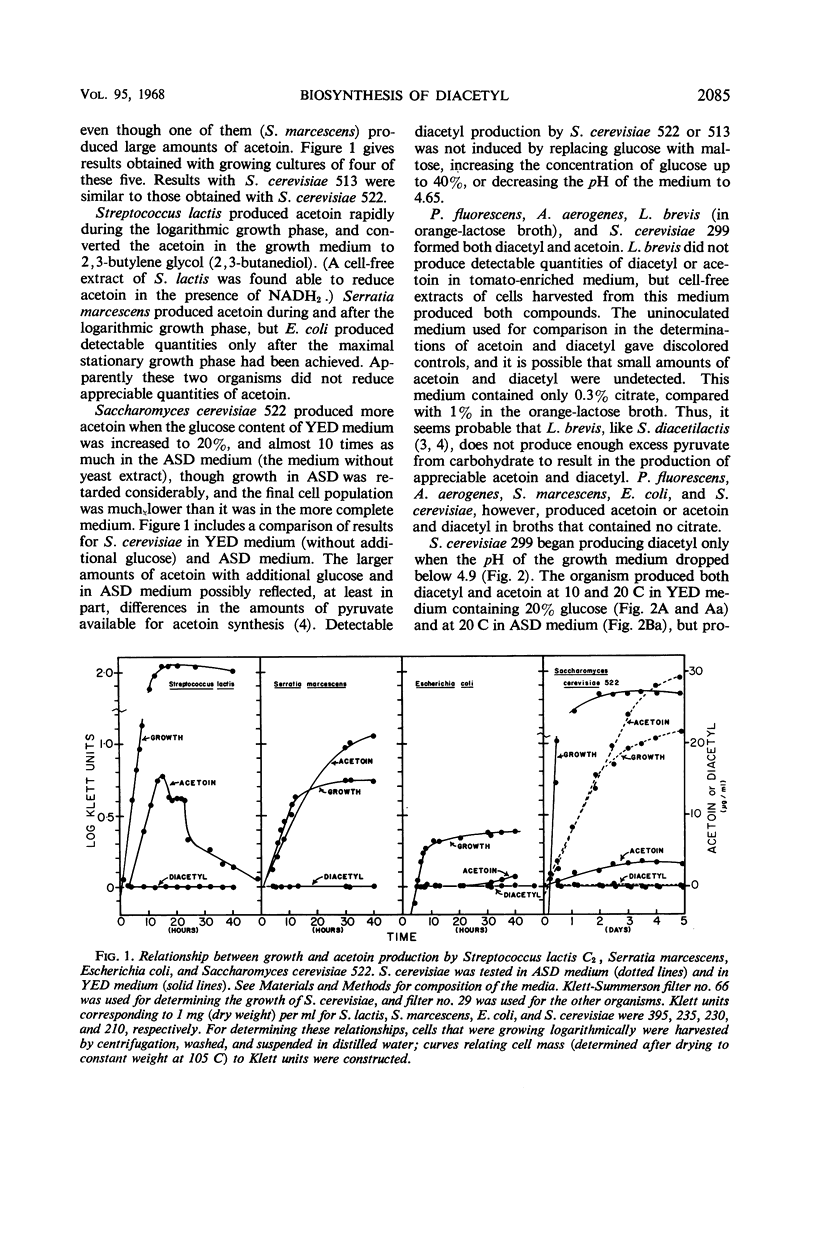

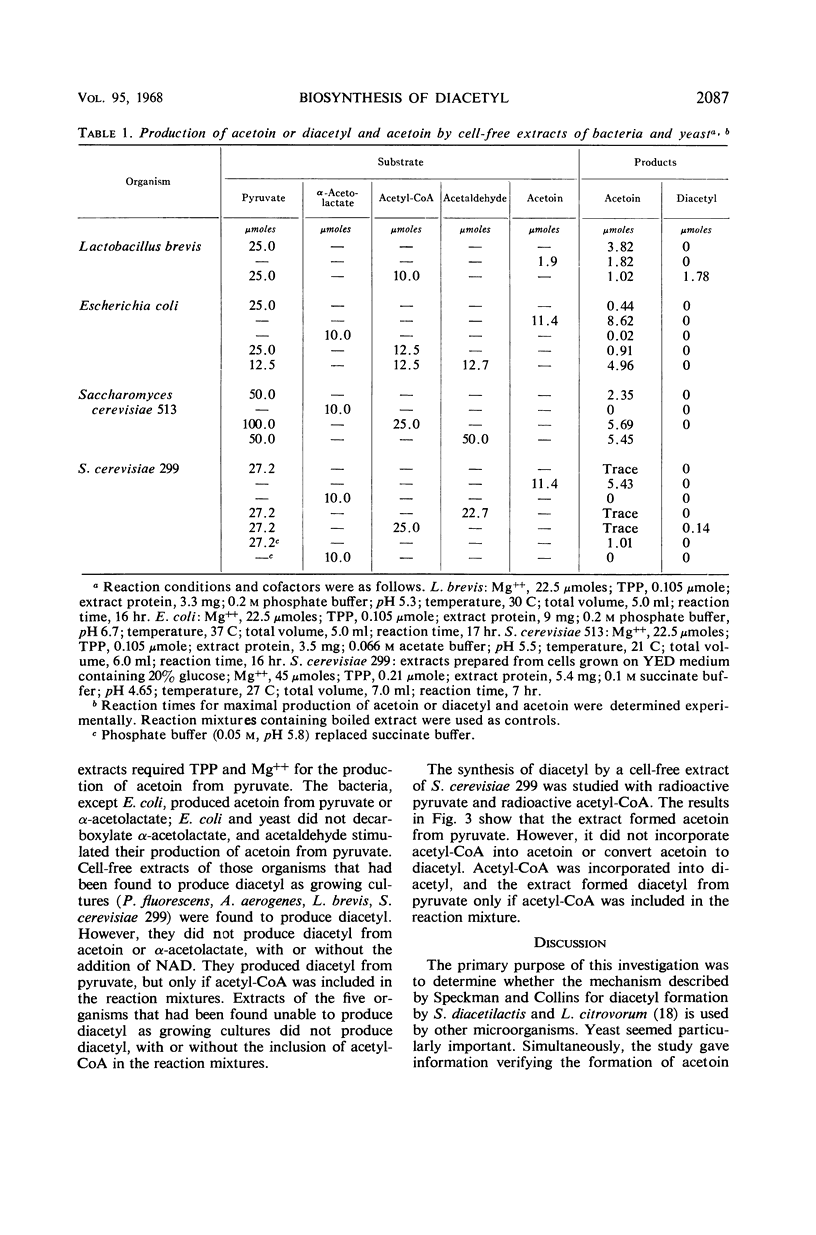
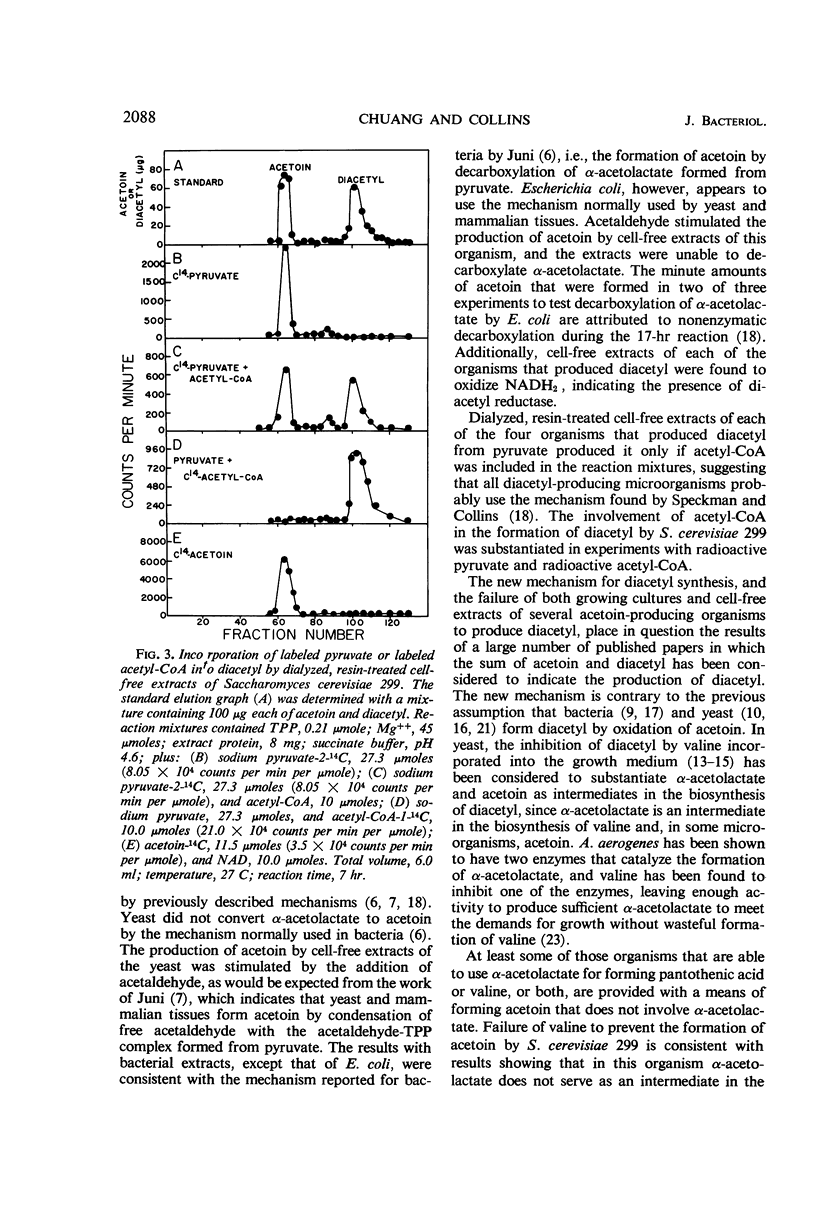
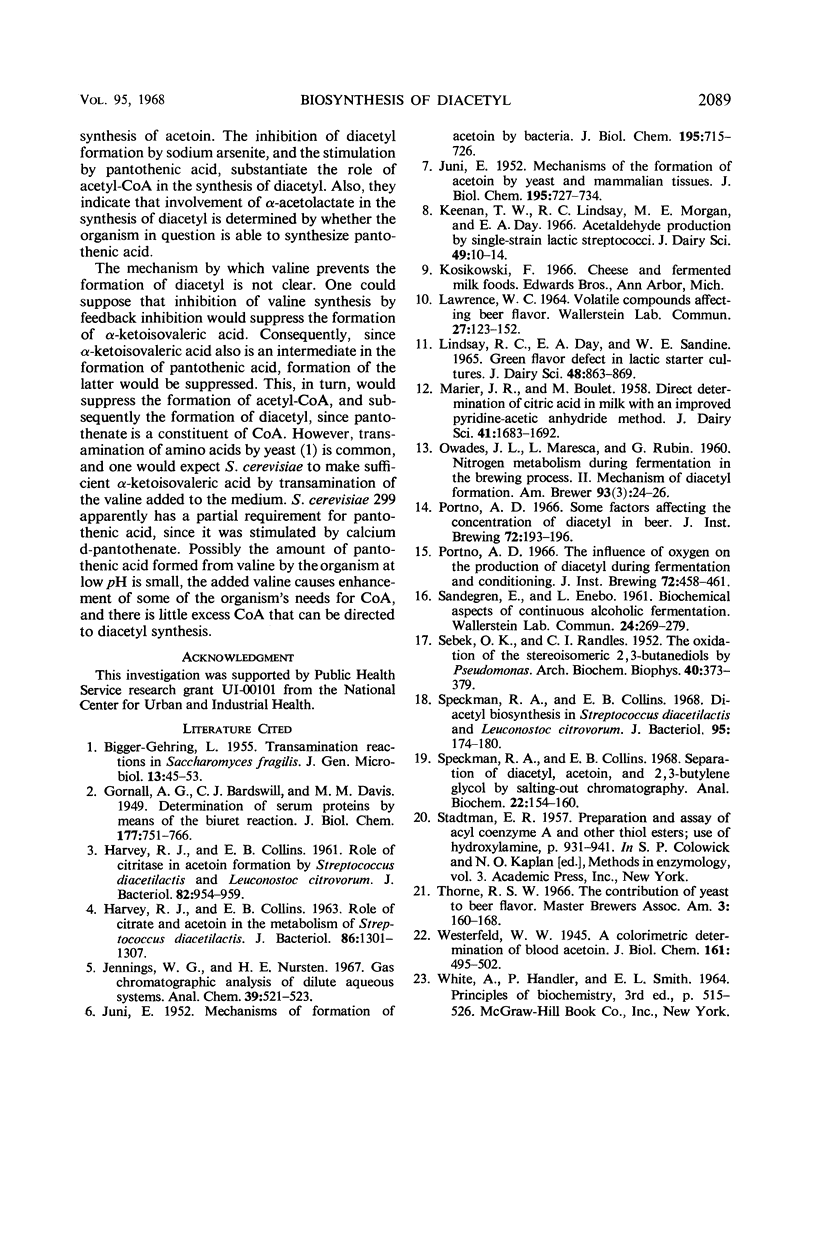
Selected References
These references are in PubMed. This may not be the complete list of references from this article.
- BIGGER-GEHRING L. Transamination reactions in Saccharomyces fragilis. J Gen Microbiol. 1955 Aug;13(1):45–53. doi: 10.1099/00221287-13-1-45. [DOI] [PubMed] [Google Scholar]
- HARVEY R. J., COLLINS E. B. ROLES OF CITRATE AND ACETOIN IN THE METABOLISM OF STREPTOCOCCUS DIACETILACTIS. J Bacteriol. 1963 Dec;86:1301–1307. doi: 10.1128/jb.86.6.1301-1307.1963. [DOI] [PMC free article] [PubMed] [Google Scholar]
- HARVEY R. J., COLLINS E. B. Role of citritase in acetoin formation by Streptococcus diacetilactis and Leuconostoc citrovorum. J Bacteriol. 1961 Dec;82:954–959. doi: 10.1128/jb.82.6.954-959.1961. [DOI] [PMC free article] [PubMed] [Google Scholar]
- JUNI E. Mechanisms of formation of acetoin by bacteria. J Biol Chem. 1952 Apr;195(2):715–726. [PubMed] [Google Scholar]
- JUNI E. Mechanisms of the formation of acetoin by yeast and mammalian tissue. J Biol Chem. 1952 Apr;195(2):727–734. [PubMed] [Google Scholar]
- Keenan T. W., Lindsay R. C., Morgan M. E., Day E. A. Acetaldehyde production by single-strain lactic streptococci. J Dairy Sci. 1966 Jan;49(1):10–14. doi: 10.3168/jds.S0022-0302(66)87776-7. [DOI] [PubMed] [Google Scholar]
- LINDSAY R. C., DAY E. A., SANDINE W. E. GREEN FLAVOR DEFECT IN LACTIC STARTER CULTURES. J Dairy Sci. 1965 Jul;48:863–869. doi: 10.3168/jds.s0022-0302(65)88352-7. [DOI] [PubMed] [Google Scholar]
- SEBEK O. K., RANDLES C. I. The oxidation of the stereoisomeric 2, 3-butane-diols by Pseudomonas. Arch Biochem Biophys. 1952 Oct;40(2):373–380. doi: 10.1016/0003-9861(52)90125-2. [DOI] [PubMed] [Google Scholar]
- Speckman R. A., Collins E. B. Diacetyl biosynthesis in Streptococcus diacetilactis and Leuconostoc citrovorum. J Bacteriol. 1968 Jan;95(1):174–180. doi: 10.1128/jb.95.1.174-180.1968. [DOI] [PMC free article] [PubMed] [Google Scholar]
- Speckman R. A., Collins E. B. Separation of diacetyl, acetoin, and 2,3-butylene glycol by salting-out chromatography. Anal Biochem. 1968 Jan;22(1):154–160. doi: 10.1016/0003-2697(68)90269-8. [DOI] [PubMed] [Google Scholar]


